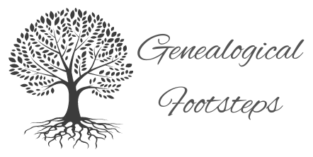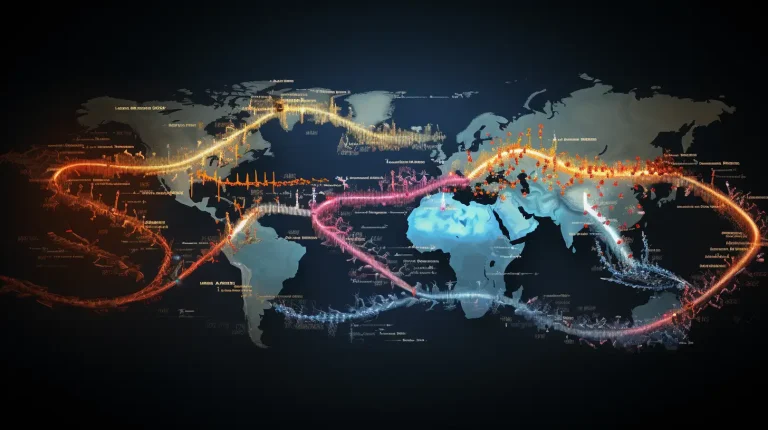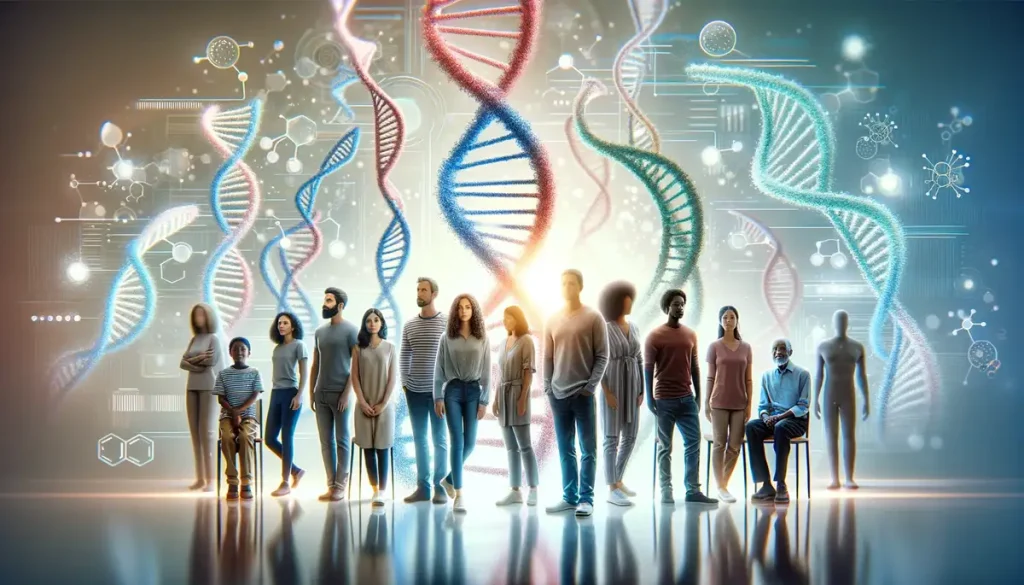Understanding one’s genetic ancestry has never been easier thanks to advancements in DNA testing technology. DNA haplogroups offer valuable insights into an individual’s deep ancestral roots, shedding light on their genetic lineage and the migration patterns of their ancestors.
DNA haplogroups are essentially genetic lineages that can be traced back to a common ancestor who lived thousands of years ago. By analysing an individual’s DNA, scientists can determine their haplogroup and use this information to uncover their ancestral origins.
Understanding DNA Haplogroups
DNA haplogroups are categorized into two types: Y-DNA haplogroups and mitochondrial DNA haplogroups. Y-DNA haplogroups are used to trace the paternal lineages. They are inherited only through the Y-chromosome, which is present only in males. Mitochondrial DNA haplogroups, on the other hand, are used to trace maternal lineages. They are inherited only through the mother.
In order to determine haplogroup assignments, genetic markers play a crucial role. These markers are mutations or changes in the DNA sequence that occur over time, and they can be used to trace ancestral lineages back thousands of years.
Each haplogroup is characterized by a unique set of genetic markers, which are used to determine its assignment. Y-DNA haplogroups are categorized based on mutations on the Y-chromosome, while mitochondrial DNA haplogroups are categorized based on mutations on the mitochondrial DNA.
Examples of Y-DNA Haplogroups
Y-DNA haplogroups can be further classified into subclades and branches, which represent different population groups and geographical origins. Some examples of Y-DNA haplogroups include:
| Haplogroup | Geographical Origin |
|---|---|
| R1b | Western Europe, Central Asia, South Asia |
| J | Middle East, North Africa, Mediterranean |
| E1b1a | Sub-Saharan Africa |
Examples of Mitochondrial DNA Haplogroups
Similar to Y-DNA haplogroups, mitochondrial DNA haplogroups are also categorized into subclades and branches, which represent different populations and origins. Some examples of mitochondrial DNA haplogroups include:
| Haplogroup | Geographical Origin |
|---|---|
| H | Europe, Southwest Asia, North Africa |
| M | East Asia, Southeast Asia, Oceania |
| L | South Asia |
The Science Behind Haplogroup Mapping
Genetic genealogy is a rapidly evolving field that leverages DNA testing to trace ancestral origins. One of the most significant aspects of genetic genealogy is haplogroup mapping.
Haplogroup mapping involves identifying genetic variations that are passed down through the generations and used to assign individuals to specific haplogroups. This information can then be used to infer patterns of migration and population movements.
Haplogroup mapping relies on the fact that genetic variations, or markers, accumulate over time in predictable ways. These markers can be used to track the lineage of particular population groups and reveal where and how they moved over time.
“Haplogroup mapping relies on the fact that genetic variations, or markers, accumulate over time in predictable ways.”
By identifying genetic markers associated with specific haplogroups, researchers can analyse individuals’ ancestry across thousands of years and multiple continents. This information allows for a comprehensive understanding of one’s ethnic heritage and potential connections to other populations.
The Process of Haplogroup Mapping
The process of haplogroup mapping involves several key steps:
- First, DNA samples are collected from individuals and subjected to genetic testing.
- The testing is designed to identify genetic markers associated with specific haplogroups.
- Once a marker is identified, it is traced back through the individuals’ lineage to determine their haplogroup assignment.
- These haplogroup assignments are then compared to known haplogroup frequencies across different populations and regions to infer patterns of migration and ancestry.
The Future of Haplogroup Research
The future of haplogroup research is promising, with technological advancements enabling deeper analysis of genetic data. Researchers are increasingly able to conduct large-scale studies, allowing for a more comprehensive understanding of human genetic history.
As the field continues to grow, the potential for new discoveries and insights into human genetics and ancestry is significant. This research will continue to shed light on the complex and fascinating story of human migration and evolution.
Paternal Haplogroups: Tracing the Male Line
Paternal haplogroups are determined by the Y-chromosome, which is only inherited by males. These haplogroups allow us to trace the male line of ancestry, going back thousands of years.
Each paternal haplogroup has a unique set of genetic markers that are used to determine its assignment. A major marker used in determining paternal haplogroups is the single nucleotide polymorphism (SNP), which is a DNA sequence variation that occurs when a single nucleotide (A, T, C, or G) in the genome differs between individuals.
SNPs are what enable scientists to identify haplogroups. By analysing a person’s genetic markers, scientists can determine which haplogroup a person belongs to, and trace their ancestry back to the founder of that haplogroup.
There are numerous paternal haplogroups, each representing a different population group and geographic origin. Some of the most common paternal haplogroups include R1b, R1a, and I.
It’s important to note that haplogroups are not indicative of specific ethnic groups or races. They are simply a way of organizing genetic data into lineages and understanding our shared ancestry.
Maternal Haplogroups: Unveiling the Female Line
Maternal haplogroups are determined by analysing the genetic information contained in mitochondrial DNA (mtDNA), which is passed down exclusively from the mother to her offspring. As such, mtDNA provides a unique and valuable insight into maternal ancestry and lineage.
Genetic markers play a crucial role in assigning maternal haplogroups, with mutations within the mtDNA used to determine specific haplogroup classifications. These markers can then be compared with those of other populations to understand patterns of migration and variation over time.
Maternal haplogroups are classified using a hierarchical system, with a single letter denoting the primary haplogroup and additional numbers and letters representing subclades and branches. These subclades can provide more detailed information about maternal lineage and ancestry, such as geographical origins and migration routes.
Research has shown that maternal haplogroups can vary among populations, providing insights into the migration and genetic history of different groups. For example, some haplogroups are more common in certain regions of the world, indicating ancestral origins or migration patterns.
Ongoing studies are also exploring potential associations between specific maternal haplogroups and genetic health traits, such as susceptibility to certain diseases.
In order to determine one’s maternal haplogroup, individuals can undergo mitochondrial DNA testing, which analyses the mtDNA inherited from their mother. This information can then be used to place them within a specific maternal haplogroup and provide insights into their maternal ancestry and lineage.
Unravelling Genetic Diversity: Haplogroup Variations
Haplogroups are not static categories but constantly changing due to mutations that occur over time. These mutations create subclades and branches within each haplogroup, representing different population groups and geographical origins. The variations within haplogroups allow for a better understanding of human evolution and migration.
For example, the Y-DNA haplogroup R1a1a1b1a1a is found in high frequencies in Eastern Europe, Central Asia, and South Asia. However, there are numerous subclades within this haplogroup that show different migration patterns and population movements. One of these subclades, R1a-Z93, is found in high frequencies in Central and South Asia, suggesting a different migration path from the more widely dispersed R1a-M417 subclade.
The variations within haplogroups also provide insights into the history of specific populations. For instance, the mitochondrial DNA haplogroup L3 is believed to have originated in East Africa over 60,000 years ago. Today, this haplogroup is found in high frequencies among the Bantu-speaking populations in Sub-Saharan Africa, indicating a possible link between the expansion of the Bantu culture and the migration of this haplogroup.
DNA Testing: Unlocking Your Haplogroup Assignment
DNA testing is a powerful tool for unlocking your haplogroup assignment. By analysing your genetic markers, DNA testing can provide valuable insights into your deep ancestral roots and genetic ancestry.
There are different types of DNA tests available, such as Y-DNA testing and mitochondrial DNA testing, each providing information about different haplogroups. Y-DNA testing is used to determine paternal haplogroups, while mitochondrial DNA testing is used to determine maternal haplogroups.
Y-DNA testing analyses genetic markers located on the Y-chromosome, which is only passed down from fathers to sons. This makes it a useful tool for tracing the male line of ancestry. Mitochondrial DNA testing, on the other hand, analyses genetic markers located on the mitochondria, which is passed down from mothers to both sons and daughters. This makes it useful for tracing the female line of ancestry.
Once the genetic markers from your DNA test have been analysed, your haplogroup assignment can be determined. This will provide information about your deep ancestral roots and the origins of your genetic lineage. It can also be used to uncover migration patterns and population movements.
As DNA testing technology continues to advance, it is becoming even more accessible and affordable. More and more people are taking advantage of this technology to explore their genetic ancestry and trace their family history. DNA testing has opened up a whole new world of possibilities for genetic genealogy, unlocking the secrets of our past.
Tracing Ancestral Migration: Haplogroups and Population Movements
Haplogroup mapping can provide valuable insights into the migration patterns of our ancestors. By analysing the distribution of haplogroups across different populations, scientists can piece together the movements of ancient human groups and their interactions with each other.
For example, studies have traced the migration of humans from Africa to other parts of the world by analysing the distribution of mitochondrial DNA haplogroups. The presence of certain haplogroups in specific populations can suggest migration routes and colonization events.
Similarly, Y-DNA haplogroups can be used to trace paternal lineages and the movements of male populations across different regions. This has led to the discovery of unique Y-DNA haplogroups in certain ethnic groups, shedding light on the ancestry and origins of these populations.
Case Studies
One example of haplogroup research in action is the study of the Bantu expansion in Africa. By analysing Y-DNA haplogroups, researchers were able to trace the migration of Bantu-speaking groups from West Africa to different parts of Africa, including the Great Lakes region and Southern Africa.
Similarly, the distribution of mitochondrial DNA haplogroups has revealed the migration history of the Polynesian people. The presence of specific haplogroups in Polynesian populations suggests a migration from Taiwan to the Pacific Islands around 5,000 years ago.
Implications for Genetic Ancestry
The use of haplogroup mapping in tracing ancestral migration has significance for genetic ancestry as well. By understanding the movements of our ancestors, we can gain a deeper appreciation for the diversity of our genetic heritage.
For example, the discovery of unique haplogroups in certain populations can lead to a better understanding and appreciation of their ancestry and history. Additionally, haplogroup data can help individuals identify potential migration routes and ancestral homelands.
Haplogroup mapping provides a fascinating glimpse into the migration patterns of our ancestors and the diversity of human genetic history. Through ongoing research and advancements in technology, we can continue to unravel the mysteries of human evolution and migration.
Haplogroup Diversity Across the Globe
Haplogroups are not evenly distributed across the globe. Different regions exhibit varying frequencies of specific haplogroups, reflecting past population movements and genetic history. For example, haplogroup R1b is the most common haplogroup in Western Europe, while haplogroups C and Q are prevalent in Native American populations.
Studies have shown that haplogroup diversity is highest in Africa, where it is believed that modern humans originated. This is attributed to the fact that African populations have had a longer time to accumulate genetic diversity due to their ancestral lineage being older than other populations in the world. As populations migrated out of Africa and settled in other parts of the world, genetic diversity was reduced due to founder effects and genetic drift.
| Region | Common Haplogroups |
|---|---|
| Europe | R1b, R1a, I, N1c |
| Asia | C, Q, O, R1a |
| Africa | E, A, B, R1b, R1a |
| Americas | C, Q, R1b, Q1a3a, Q1b1a |
It is worth noting that haplogroup frequencies may also exhibit regional and subregional variations within a continent or even a country. For example, in the United Kingdom, haplogroup I is more common in the north, while haplogroup R1b is predominant in the west and south.
Haplogroups and Genetic Health Traits
As genetic testing becomes more widespread, researchers are beginning to explore potential associations between haplogroups and certain genetic health traits. Studies have suggested that certain haplogroups may be linked to an increased risk of certain conditions or traits.
For example, one study found that individuals with a certain mitochondrial DNA haplogroup may be more susceptible to developing Alzheimer’s disease. Another study found that certain Y-DNA haplogroups may be associated with male pattern baldness.
However, it is important to note that these studies are still in the early stages and the links between haplogroups and genetic health traits are not yet well understood. It is also important to remember that many health traits are influenced by a combination of genetic and environmental factors.
Nevertheless, the potential for haplogroup associations with genetic health traits is an exciting area of research and may have implications for personalized medicine in the future.
The Future of Haplogroup Research
Haplogroup research is an ever-evolving field, and the future looks promising for further advancements and discoveries. With the development of new sequencing technologies and data analysis techniques, the accuracy and resolution of haplogroup assignments are likely to improve.
One exciting prospect is the use of whole-genome sequencing, which would provide a comprehensive view of an individual’s genetic makeup, including both haplogroup assignments and additional genetic variations. This would enable more precise analyses of population history and migration patterns.
Furthermore, larger sample sizes and more extensive databases will allow for more detailed studies of haplogroup diversity across different populations and geographic regions. Ongoing research collaborations and data sharing initiatives will continue to facilitate progress in this field.
DNA Haplogroups – Conclusion
In conclusion, DNA haplogroups are a crucial tool for tracing deep ancestral roots and understanding one’s genetic ancestry. By analysing genetic markers and assigning individuals to specific haplogroups, scientists can uncover ancestral migration patterns and population movements, providing valuable insights into human history and evolution.
The study of DNA haplogroups has shed light on the paternal and maternal lineages of humans, with Y-DNA haplogroups tracing the male line and mitochondrial DNA haplogroups unveiling the female line. The diversity observed within haplogroups, including subclades and branches, highlights the complex interactions between different populations throughout history.
Advances in DNA testing and research techniques have paved the way for ongoing studies into the associations between haplogroups and genetic health traits, as well as the exploration of haplogroup diversity across the globe. The future of haplogroup research looks promising, with continued collaborations and larger sample sizes enabling more accurate analyses and further discoveries.
For individuals interested in exploring their genetic lineage, DNA testing can provide valuable information about their haplogroup and ancestral origins. The fascinating world of genetic genealogy awaits those curious about their deep ancestral roots.

My name is Anthony, the founder of Genealogical Footsteps. I have over 20 years of dedicated experience in family history and genealogy (although I am not a professional genealogist). I hold BA in history, and am considering further education (despite my age). My journey in genealogy has led me to remarkable discoveries and projects, particularly where my Cypriot genealogy is concerned. I am passionate about uncovering the stories behind names and have helped friends and family connect with their heritage, including those with Cypriot, Celtic, and Viking ancestry. Click here to read more about me.



